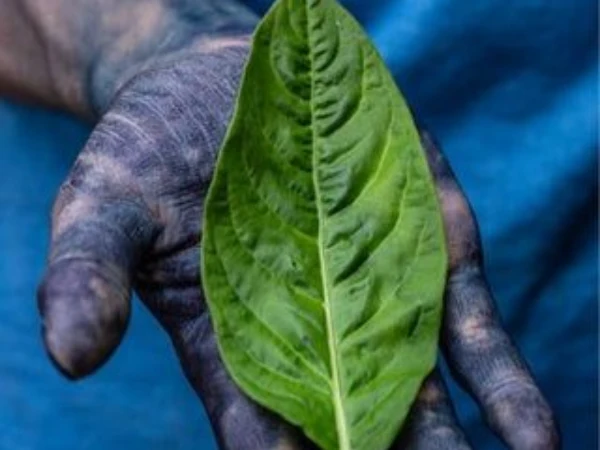Denim, a versatile and durable fabric, has become an emblem of casual fashion globally. From jeans to jackets and beyond, denim is a staple in many wardrobes. Sustainability in the production of denim has come under intense scrutiny in recent years as consumers have become more concerned about the fashion industry’s impact on the environment.
This article aims to delve into the environmental impact and ethical considerations associated with denim production while exploring sustainable alternatives, manufacturing practices, recycling and upcycling initiatives, ethical considerations, and the role of consumers in making sustainable denim choices.
Here’s the guide to this article:
- Understanding the Production of Cotton
- Sustainable Manufacturing Practices in Denim Production
- Denim Recycling and Upcycling
- Ethical Considerations in Denim Production
- Consumer Responsibility and Sustainable Denim Choices
- Conclusion
Understanding the Production of Cotton
To comprehend the sustainability challenges surrounding denim, it is crucial to delve deeper into the manufacturing process. Denim production begins with the cultivation of cotton, which is a resource-intensive crop requiring substantial water and chemical inputs. Cotton is grown in large monoculture fields, often leading to soil depletion and increased vulnerability to pests. In addition, the traditional cotton cultivation process uses a large amount of synthetic pesticides and chemical fertilizers, which will lead to water pollution. Coupled with the use of pesticides without purposed pesticide use, it will kill all living things in the cotton fields, resulting in the loss of biodiversity.
Once the cotton is picked, it goes through multiple treatments and processing before it is finally transformed into denim. The process involves spinning the cotton fibers into yarn, which is then woven into denim fabric using specialized looms. The fabric is then prepared for dyeing, typically through a process called rope dyeing, where the fabric is repeatedly dipped into indigo dye vats. The dyeing process of denim is known for its water-intensive nature and the release of hazardous chemicals into water bodies.
Finishing processes, including the application of various finishes, distressing techniques, and treatments to achieve desired aesthetics, further contribute to the environmental impact of denim production. These processes often require the use of chemicals such as bleach, enzymes, and abrasives, and the resulting wastewater contains harmful substances. These wastewaters need to be treated specially when they are discharged, otherwise, they will further pollute the water source and affect the growth of aquatic organisms and other aquatic life that depends on water.
To address these challenges, the denim industry is increasingly exploring sustainable denim production practices. This includes using organic cotton. People know that organic cotton is grown using organic fertilizers and biological pest control methods, without the use of synthetic pesticides and chemical fertilizers, with minimal impact on soil, water quality, and biodiversity. Other sustainable alternatives include using recycled or recycled cotton to produce denim, which reduces the need for raw cotton and reduces landfill waste.
Efforts are also being made to reduce water consumption and pollution in denim production. Innovative dyeing techniques, such as foam dyeing and air dyeing, use less water and chemicals compared to conventional methods. Advanced water treatment systems allowing for the reuse and recycling of water are being implemented by some denim manufacturers, reducing the strain on freshwater resources.
In addition, we pay more attention to protecting the health and safety of workers in the denim production process. This involves fair labor practices, safe working conditions, and adequate wages. Brands are increasingly seeking certifications such as Fair Trade and GOTS (Global Organic Textile Standard), which verify adherence to these ethical standards. Some manufacturers are also implementing transparency initiatives, providing consumers with visibility into their supply chains and production processes.
Overall, understanding the intricacies of denim production allows us to recognize the environmental and ethical challenges it poses. It highlights the importance of adopting sustainable practices throughout the supply chain, from cotton cultivation to finishing processes. It also highlights the need for consumer awareness and support for sustainable denim choices. By collectively taking action, the denim industry can minimize its ecological footprint and contribute to a more sustainable and ethical fashion landscape.
Sustainable Manufacturing Practices in Denim Production
In recent years, the denim industry has witnessed a surge in sustainable manufacturing practices aimed at minimizing the environmental impact of denim production.
One notable approach is the implementation of water reduction strategies. Traditional rope dyeing methods that rely on multiple dips in indigo dye vats consume significant amounts of water. To address this, some manufacturers have adopted newer dyeing techniques like laser or ozone treatments, which use minimal water and energy while achieving similar aesthetic effects.

Moreover, advancements in manufacturing technology have enabled the use of eco-friendly dyes that require fewer chemicals and water during the dyeing process. These dyes, such as plant-based indigo or natural alternatives like graphene, not only reduce water consumption but also limit the release of harmful substances into waterways. Additionally, some manufacturers are exploring methods like pre-reduced indigo, where the dye is chemically transformed to be more soluble, allowing for reduced dyeing times and water usage.
Another aspect of sustainable denim production is the responsible treatment of waste generated during manufacturing processes. By implementing effluent treatment plants and advanced filtration systems, denim manufacturers can effectively remove harmful chemicals from wastewater before being discharged. Some companies are even embracing closed-loop production systems, where water and chemicals used in the manufacturing process are continuously recycled and reused, resulting in significant reductions in water consumption and pollution.
Denim Recycling and Upcycling
To promote a circular economy, denim brands are exploring take-back programs and recycling initiatives. Some companies offer repair and repurposing services, extending the lifespan of denim garments and reducing the demand for new products. Recycling processes are being implemented to recover fibers from worn-out or discarded denim, which can then be used to create new fabrics or blended with virgin materials.

Recycling and upcycling present valuable opportunities to curb the environmental impact of denim production. This section emphasizes the importance of recycling and upcycling denim garments, highlighting the significance of diverting waste from landfills. Innovative recycling technologies for denim, including mechanical and chemical processes, will be examined. Additionally, examples of brands successfully incorporating denim recycling and upcycling into their business models will be provided.
Ethical Considerations in Denim Production
In addition to environmental considerations, sustainable denim production also emphasizes fair labor practices and improved working conditions. Denim manufacturers are increasingly working towards obtaining certifications such as Fair Trade, which ensures that workers receive fair wages and work in safe environments. Additionally, some brands are partnering with local organizations and communities to foster social development and empower workers throughout the supply chain.
Consumer Responsibility and Sustainable Denim Choices
Consumer behavior plays a pivotal role in driving sustainability in the fashion industry. Furthermore, initiatives focused on supply chain transparency and traceability are gaining momentum within the denim industry. Brands are collaborating with suppliers and adopting technologies like blockchain to provide customers with information about the materials used, production processes, and labor conditions. This helps consumers make more informed decisions and supports brands that are committed to sustainable and ethical practices.
And further emphasizes the role of circularity through thrifting and vintage denim, promoting the idea of extending the lifespan of denim garments. Practical examples and relevant statistics will be included to inspire readers to make conscious and sustainable denim choices.
Conclusion
In conclusion, while denim remains a highly popular fabric globally, it is crucial to acknowledge its environmental impact and ethical considerations. By exploring sustainable alternatives like organic denim, embracing eco-friendly manufacturing practices, implementing recycling and upcycling initiatives, considering ethical considerations, and encouraging responsible consumer choices, the denim industry can embark on a path toward sustainability.
Balancing denim’s popularity with sustainable practices requires collective efforts from industry stakeholders and consumers alike. By taking action and supporting sustainable initiatives, we can work towards a more environmentally friendly and ethical denim industry.
What do you think about sustainable denim fabric? Share your thoughts with us!
Happy Reading!





